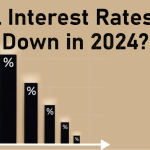
Anticipating retirement often brings a mix of excitement and uncertainty, especially regarding financial security. One powerful strategy to enhance your retirement portfolio is by incorporating precious metals into your Individual Retirement Account (IRA). This article explores how investing in a precious metals IRA can safeguard and potentially enhance your retirement savings.
Precious metals like gold, silver, platinum, and palladium have long been symbols of wealth, beauty, and power across various cultures. Their enduring value and appeal make them an excellent choice for investors seeking diversification and protection against economic instability. Many choose to invest in precious metals through a gold SEP IRA to diversify their portfolios and secure their finances.
The intrinsic value of precious metals is one of their main attractions. Unlike paper currency, which can lose value due to inflation, metals tend to maintain their value over time. They are tangible assets, unaffected by the policies of banks or governments, making them a reliable option for preserving and growing wealth, even during economic downturns.
Diversification is the cornerstone of any robust financial strategy. Traditionally, investment portfolios have relied heavily on stocks and bonds. However, in today’s volatile markets, the concept of diversification has evolved to include alternative assets like precious metals. By adding precious metals to your retirement account, you can reduce the risk associated with stock market fluctuations. Gold and silver prices often move independently of other financial assets, providing a hedge against market volatility. During economic crises, the value of these metals usually rises, offering stability and peace of mind for your retirement portfolio.
To take advantage of the benefits of precious metals in your retirement planning, you can set up a Precious Metals IRA, also known as a Precious Metals Self-Directed IRA. This type of IRA allows you to hold physical precious metals within your retirement account. Here’s how it works:
- Open a Self-Directed IRA: Choose a custodian who specializes in precious metals investments. These custodians are equipped to handle the unique requirements of precious metals IRAs.
- Fund Your Account: Once your IRA is set up, you can fund it by rolling over funds from an existing IRA or making annual contributions, depending on your eligibility.
- Select Your Investments: With funds in your account, you can invest in gold, silver, platinum, and palladium coins or bars.
- Secure Storage: Precious metals in your IRA must be stored in a bank vault or a licensed depository, which provides top-notch security to protect your assets.
- Custodian Management: Your custodian will handle administrative tasks and ensure compliance with IRS regulations.
Investing in a precious metals IRA offers several benefits. Depending on the type of IRA, you may enjoy tax advantages such as tax-deferred or tax-free growth. Precious metals can also diversify your portfolio and reduce risk. Historically, they have protected against inflation, helping retirees preserve their purchasing power.
As tangible assets, precious metals are less susceptible to artificial price inflation and provide reliability even during economic downturns. Additionally, some IRAs offer flexibility with penalty-free withdrawals for specific purposes like education or purchasing a first home, providing a disciplined yet adaptable method of saving for retirement.
Choosing a reputable custodian or financial institution is crucial for managing your IRA. It’s essential to understand the costs associated with the safe storage of physical precious metals and to be aware of the tax implications and contribution limits of different IRA options (such as Traditional and Roth IRAs). While precious metals can be a financial haven, they are not immune to market volatility, which can impact the value of your investments.
In summary, precious metals can significantly enhance your retirement portfolio by providing diversification, stability, and protection against economic volatility. However, it is vital to carefully consider the risks and rewards before incorporating this strategy into your retirement planning. By doing so, you can build a resilient portfolio that withstands economic challenges and supports the retirement lifestyle you envision.




